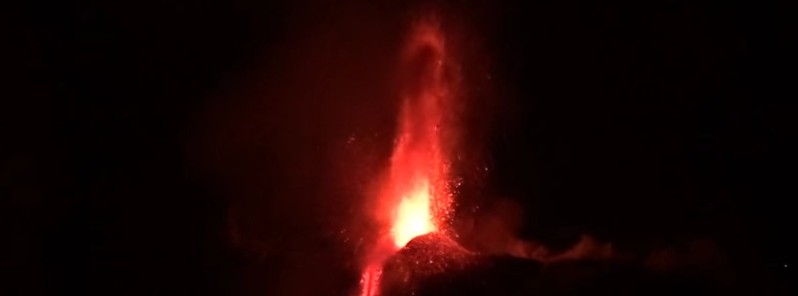Strong increase in activity at Mount Etna, lava overflowing

Etna's activity is increasing strongly, and lava is overflowing from the Southeast Crater (SEC) toward south-southwest, Boris Behncke of the INGV's Etna Observatory reports.
The activity has increased sharply on February 27, 2017, following mild Strombolian activity accompanied by frequent small ash emissions at the Southeast Crater during the second half of January and an earthquake swarm on January 30.
The activity in January marked the return of magma to the surface after almost 8 months of eruptive quiescence on Etna, but the summit area of the volcano had not been entirely quiet during the past few months. You can read more about that, here.
A range of web cameras looking at Etna is available at INGV-OE. Live streaming is currently active at SkyLineWebCams.


Geological summary
Mount Etna, towering above Catania, Sicily's second largest city, has one of the world's longest documented records of historical volcanism, dating back to 1500 BCE. Historical lava flows of basaltic composition cover much of the surface of this massive volcano, whose edifice is the highest and most voluminous in Italy. The Mongibello stratovolcano, truncated by several small calderas, was constructed during the late Pleistocene and Holocene over an older shield volcano. The most prominent morphological feature of Etna is the Valle del Bove, a 5 x 10 km (16 404 x 32 808 feet)horseshoe-shaped caldera open to the east.
Two styles of eruptive activity typically occur at Etna. Persistent explosive eruptions, sometimes with minor lava emissions, take place from one or more of the three prominent summit craters, the Central Crater, NE Crater, and SE Crater (the latter formed in 1978). Flank vents, typically with higher effusion rates, are less frequently active and originate from fissures that open progressively downward from near the summit (usually accompanied by strombolian eruptions at the upper end). Cinder cones are commonly constructed over the vents of lower-flank lava flows. Lava flows extend to the foot of the volcano on all sides and have reached the sea over a broad area on the SE flank. (GVP)
Featured image: Etna erupting on February 27, 2017. Credit: Boris Behncke

Commenting rules and guidelines
We value the thoughts and opinions of our readers and welcome healthy discussions on our website. In order to maintain a respectful and positive community, we ask that all commenters follow these rules:
We reserve the right to remove any comments that violate these rules. By commenting on our website, you agree to abide by these guidelines. Thank you for helping to create a positive and welcoming environment for all.